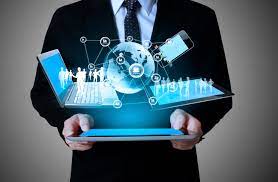Technology: How it is Changing the Way We Live and Work
Introduction
Technology is advancing at an astonishing rate, and it’s changing the way we live and work in many ways. From smartphones and laptops to artificial intelligence and the Internet of Things, technology is making our lives more convenient, efficient, and connected. In this article, we will explore some of the ways that technology is changing the way we live and work, and how it is shaping the future.
Smartphones and Mobile Technology
Smartphones and mobile technology have had a significant impact on the way we live and work. These devices have made it possible to stay connected to the internet and to each other at all times. We can use our smartphones to access the internet, make calls, send messages, and even control other devices in our homes. They also have had an impact on how we consume media, and how we shop, and how we work, as many jobs can be done remotely now.
Artificial Intelligence (AI)
Artificial intelligence (AI) is the simulation of human intelligence in machines that are programmed to think and learn like humans. AI is being used in many industries, including healthcare, finance, and transportation. For example, AI is being used in diagnosing diseases, in stock market predictions, and in self-driving cars. AI is also helping companies to optimize their operations, and enabling businesses to automate repetitive tasks, which allows employees to focus on more valuable activities.
Internet of Things (IoT)
The Internet of Things (IoT) is the network of physical objects, such as appliances, vehicles, and industrial equipment, that are connected to the internet. These objects are equipped with sensors and other technologies that allow them to collect and share data. The IoT is making it possible for devices and appliances to communicate with each other and with humans, which can improve efficiency, safety, and convenience. For example, a smart thermostat can learn a person’s temperature preferences and adjust accordingly, or a sensor on a bridge can alert engineers to potential structural issues.
Cloud Computing
Cloud computing is the delivery of computing services—including servers, storage, databases, networking, software, analytics, and intelligence—over the Internet (“the cloud”) to offer faster innovation, flexible resources, and economies of scale. This technology allows businesses and individuals to store and access data and applications over the internet, rather than on their own computers. This can improve efficiency, reduce costs, and allow for more flexible working arrangements.
Virtual and Augmented Reality
Virtual reality (VR) and augmented reality (AR) are changing the way we interact with digital content. VR creates a fully immersive digital experience, while AR overlays digital content on the real world. These technologies are being used in many industries, including gaming, education, and healthcare. For example, VR is being used to treat phobias and post-traumatic stress disorder, and AR is being used to provide remote training and assistance.
Conclusion
Technology is advancing at an astonishing rate, and it is changing the way we live and work in many ways. From smartphones and laptops to artificial intelligence and the Internet of Things, technology is making our lives more convenient, efficient, and connected. However, as technology continues to advance, it is important to consider the privacy and security implications of these new technologies, and to take steps to protect our personal and sensitive information. The future of technology is exciting, and it will bring many new opportunities and challenges for individuals and organizations alike.
